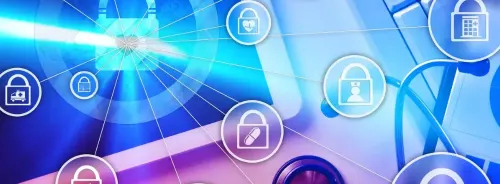Cybersecurity is a significant and growing concern in healthcare, where sensitive data and essential operational systems are vulnerable to increasing cyber threats. Traditional security measures may not offer the necessary visibility into an organisation’s infrastructure, leaving it exposed to potential breaches and disruptions. Cybersecurity dashboards are increasingly seen as an essential tool for modern healthcare organisations, providing real-time, comprehensive insights into the health of an organisation’s digital environment. These dashboards help identify vulnerabilities early, enabling proactive risk management and swift responses to potential breaches, ultimately safeguarding both patient data and operational continuity.
Full Visibility Across the Attack Surface
The modern healthcare attack surface has expanded, now spanning on-premise networks, cloud platforms, remote devices and third-party vendors. With this complex environment, a single unpatched system or unsecured connection can create a significant vulnerability, potentially compromising the entire network. Cybersecurity dashboards provide critical visibility by continuously scanning systems and identifying weaknesses in real time. When a known Exploitable Vulnerability (KEV) is detected, the dashboard immediately highlights it for remediation. This quick identification and prioritisation is essential because cybercriminals are quick to exploit vulnerabilities, sometimes within hours of disclosure or even before they are officially recognised. By providing organisations with the tools to act rapidly, dashboards reduce the window of opportunity for attackers and minimise exposure. Real-time threat detection and prioritisation allow IT teams to respond quickly, effectively addressing the highest-risk vulnerabilities and reducing the likelihood of a breach.
Integrated Action for Threat Mitigation
While visibility into vulnerabilities is vital, it is not enough on its own. Effective cybersecurity requires more than just monitoring, it demands swift, decisive action. Cybersecurity dashboards that integrate with threat detection and response systems can act as a command centre for real-time risk management. These integrated systems can flag abnormal behaviour and automatically trigger responses such as isolating compromised systems, deploying patches, or even neutralising threats without manual intervention. This automation helps reduce dwell time—the critical period between the intrusion and detection of a cyberattack—allowing security teams to respond much more quickly, often preventing attacks before they can cause significant damage.
Must Read: Unlocking Health Data Demands Governance Beyond Compliance
Moreover, even the most robust technical defences can be compromised by human error, and in healthcare, this remains a significant risk. Phishing and social engineering attacks continue to target employees, exploiting weaknesses in human behaviour. Modern cybersecurity dashboards address this by incorporating human element metrics, such as employee participation in cybersecurity training programmes and results from phishing simulations. These metrics help organisations understand the human factors that contribute to cybersecurity vulnerabilities. By integrating both technical data and human awareness, dashboards provide a more complete picture of an organisation’s overall security health. This holistic approach ensures that organisations can monitor and improve not just system vulnerability but also employee cybersecurity behaviours, which are just as important for preventing breaches.
Measuring Progress, Improving Security Posture and Prioritisation
Cybersecurity dashboards also allow organisations to measure and track the effectiveness of their cybersecurity strategies through Key Performance Indicators (KPIs). These KPIs can include metrics like the average time to remediate vulnerabilities, the reduction in phishing click rates and endpoint coverage. These measurable outcomes provide tangible evidence of progress over time and help organisations understand how well they are managing cybersecurity risks. In addition to KPIs, dashboards offer benchmarking capabilities, allowing organisations to compare their cybersecurity performance with industry peers or similar-sized organisations. This external comparison provides valuable context, highlighting areas of improvement and fostering accountability at the leadership level. By setting benchmarks against industry standards, organisations can push for continuous improvement, ensuring that they stay ahead of emerging threats and maintain strong security measures.
With thousands of potential vulnerabilities to manage, prioritisation is key. Cybersecurity dashboards use threat intelligence to correlate vulnerability scan results with live data on emerging threats, helping security teams identify which vulnerabilities are being actively targeted by attackers. By focusing first on the highest-risk vulnerabilities, organisations can reduce patch cycles from weeks to days. This prioritisation, combined with the automation of threat response, helps organisations quickly mitigate risks and lower their exposure to cyber threats. By identifying and addressing the most pressing vulnerabilities first, dashboards ensure that organisations can manage their security posture more efficiently, reducing the likelihood of a breach while also conserving valuable resources.
Cybersecurity dashboards give healthcare organisations real-time visibility across systems and people, linking vulnerability scanning with detection and response, training metrics and KPIs. By highlighting known exploitable vulnerabilities, automating containment and patching, and aligning views from engineers to executives, they shorten dwell time and focus effort where risk is highest. Used consistently, these tools help protect patient data and support operational continuity, providing a practical foundation for proactive risk management.
Source: Healthcare IT Today
Image Credit: iStock






